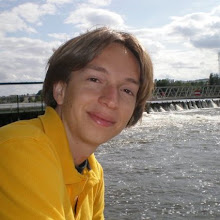As we step into the yard surrounding the temple, we are hurried by a guard towards the entrance. There is a short thin building surrounding the yard where the disciples live, and plenty of space around the temple. The building looks like an L-shape from the top, and only a few meters from the entrance is a white tower, roughly 5 stories high.
Tourists are taking pictures outside the temple, coming from all parts of India. The guard asks us to continue inside, after leaving our shoes at the rack outside the building. The shade is on the other side of the entrance, so the floor is burning our feet as we hop inside; everyone is doing the same. On the other entrance, at the short side of the building, I see a shaded shoe rack, to which it seems devotees are going to. We were in the tourist entrance.
Inside was a small room which led to the main area, with a low ceiling and columns throughout the square plaza. At the end was a section separated by a low wall, where two priests were receiving baskets with offerings and distributing drops of holy water.
People crowded near the priests, putting their hands in front to receive the water. Mothers and grandmothers would push children through the crowd to the front, holding the arms forward, cupping hands, drink some water and drop some on their head, squish to the sides and out of the way. Tourists were part of this too, sometimes only to get a view of the alter, other times in an attempt to blend in.
Through the room on the right were 2 more narrow halls, leading to small spaces where some more priests were busy at work. While we walked through to the last room, to the entrance for devotees, 5 priests were seated on the floor to our right, with their backs on the wall, reading prayers out loud from separate scripts.
They were each, independently, chanting without fear, eyes closed and head pointed upwards, so it seemed they were signing to the passing tourists. They would occasionally glance down at their manuscript, and catch a glimpse of the passersby.
As if the voices of these priests did not fill up the room atmosphere, thin smoke emerged from a space to the left. I moved forward to peek in, and through the noise and smoke saw an elder sitting near an opening in the floor in the middle of the room, rhythmically dropping what seemed like colorful flowers, which reminded me of offerings I had seen people bring in.
When the flower would disappear into the opening, more smoke would rise. Soon the air in the room all turned to smoke and the people around me faded, all that remained was the priests' chanting, undifferentiable.
We made our way to the main room, through the crowd to the fresh air, and kangarooed over the burning stone floors back to our sandals.
